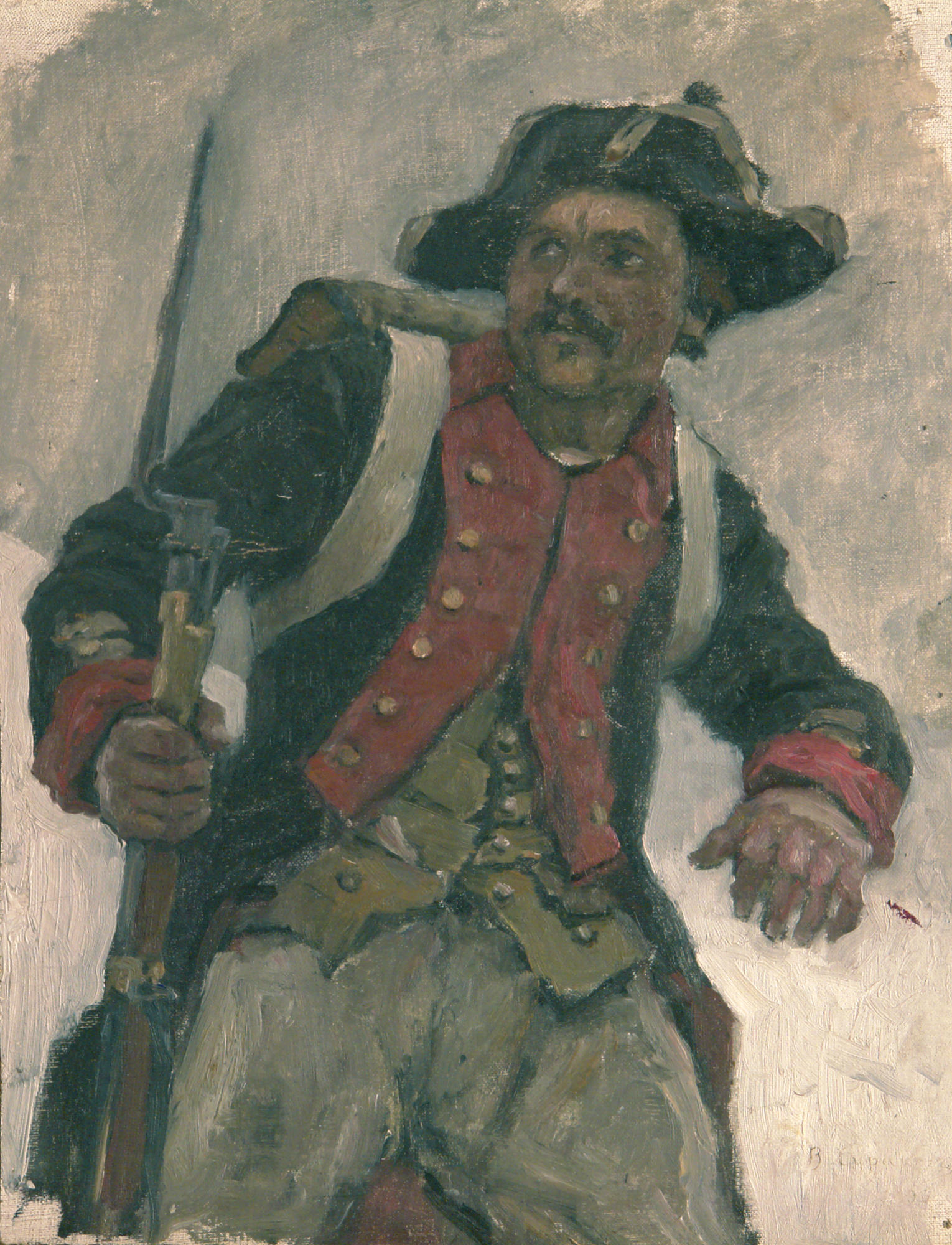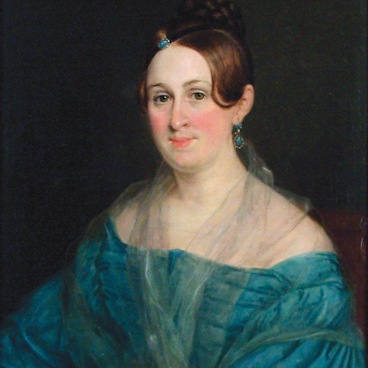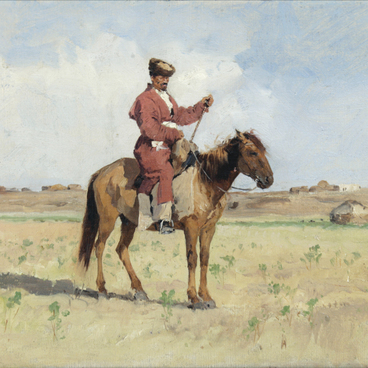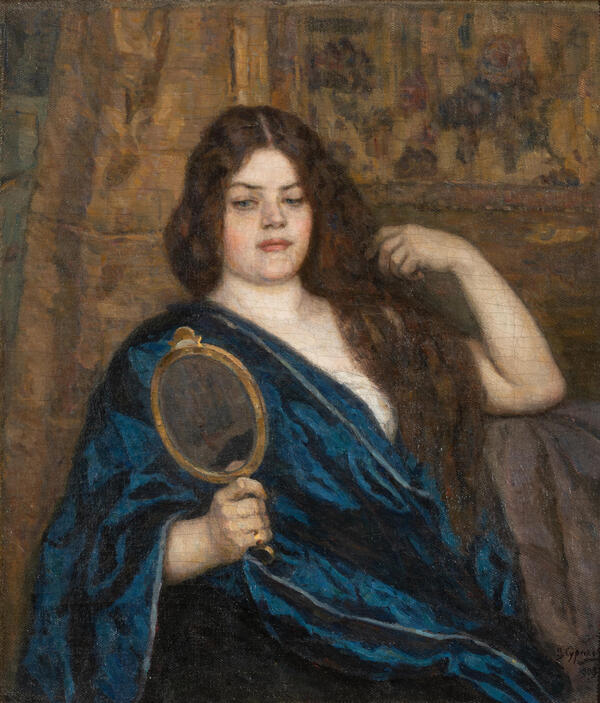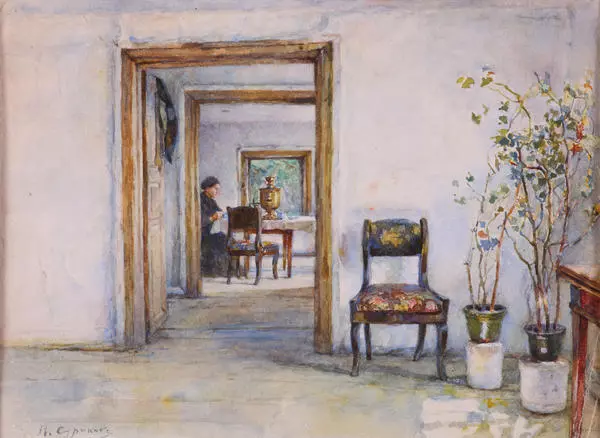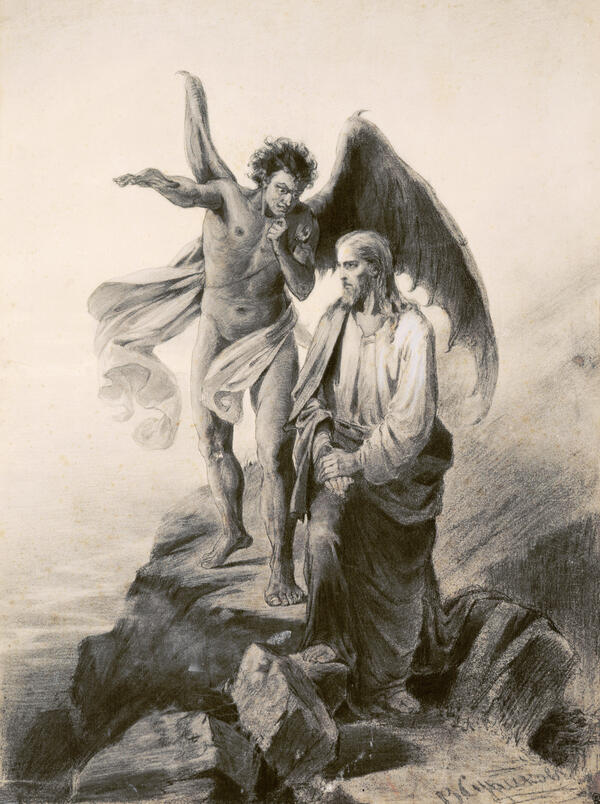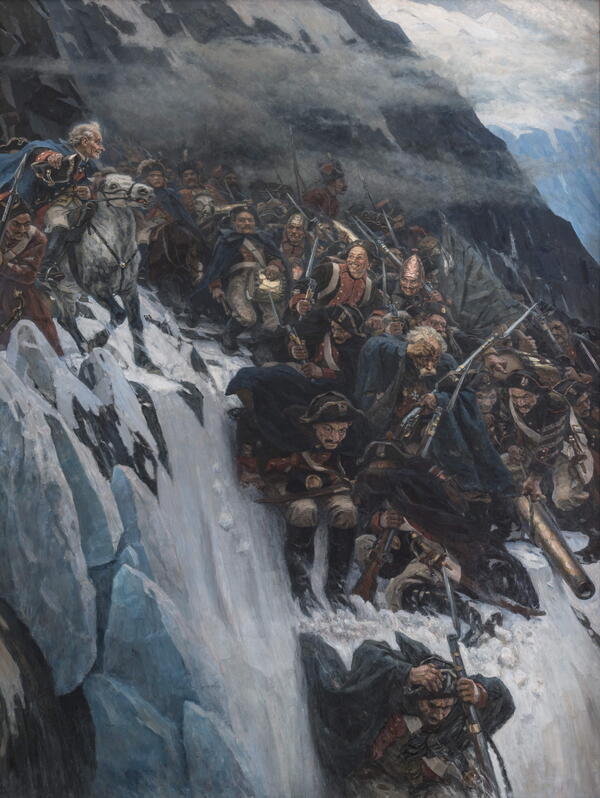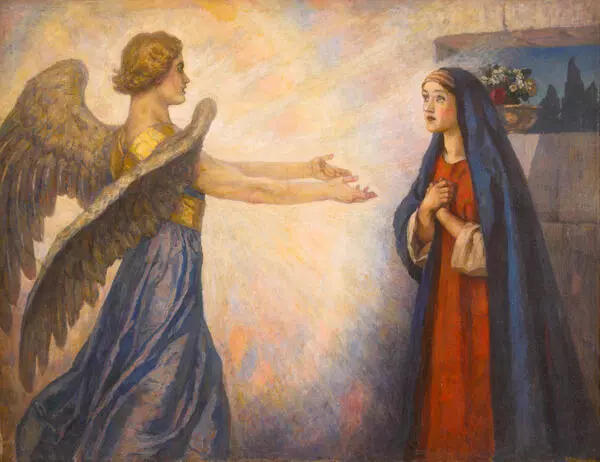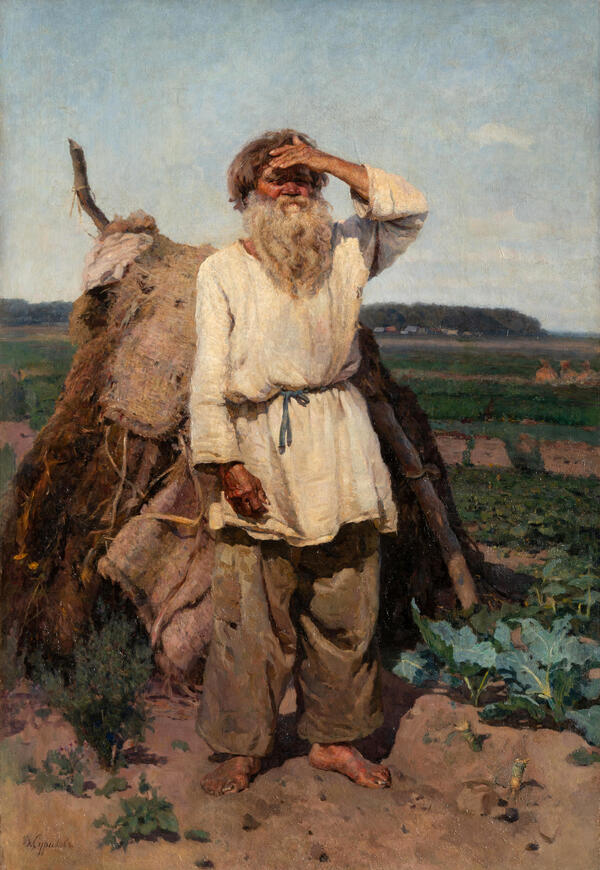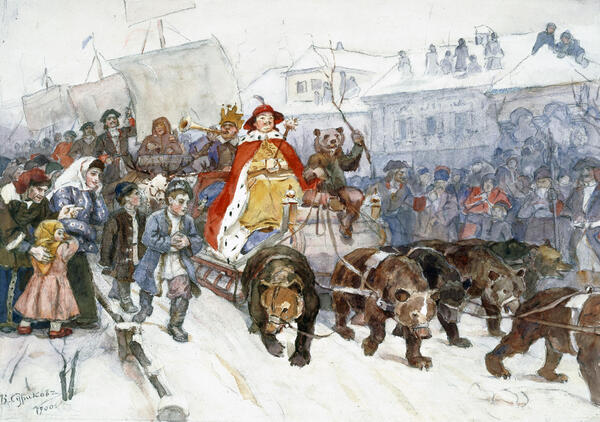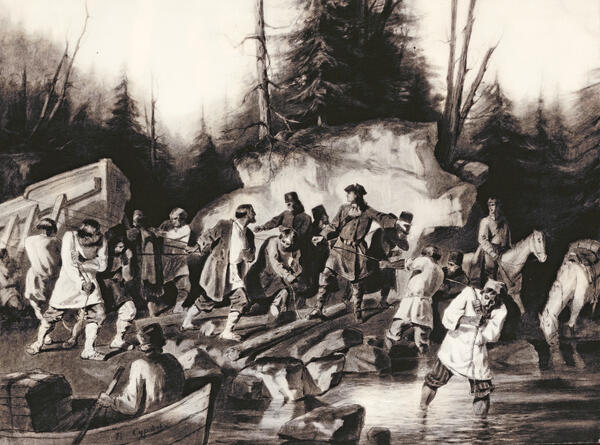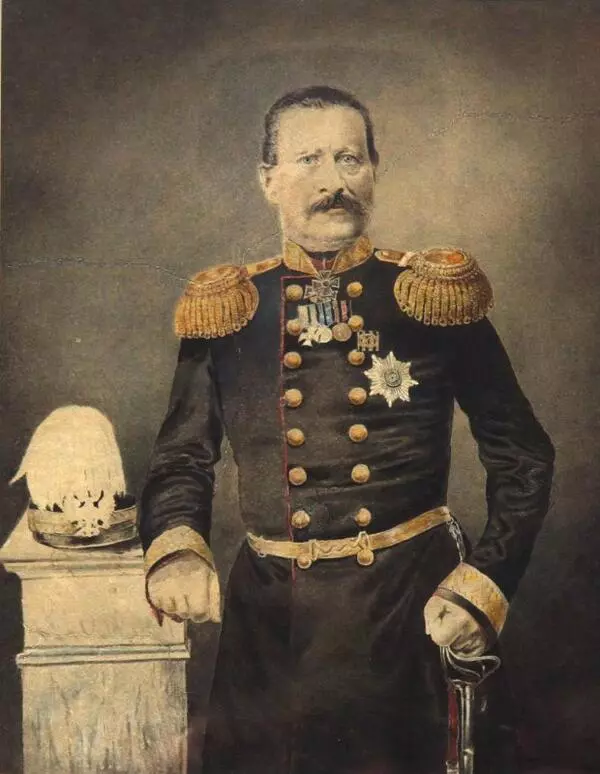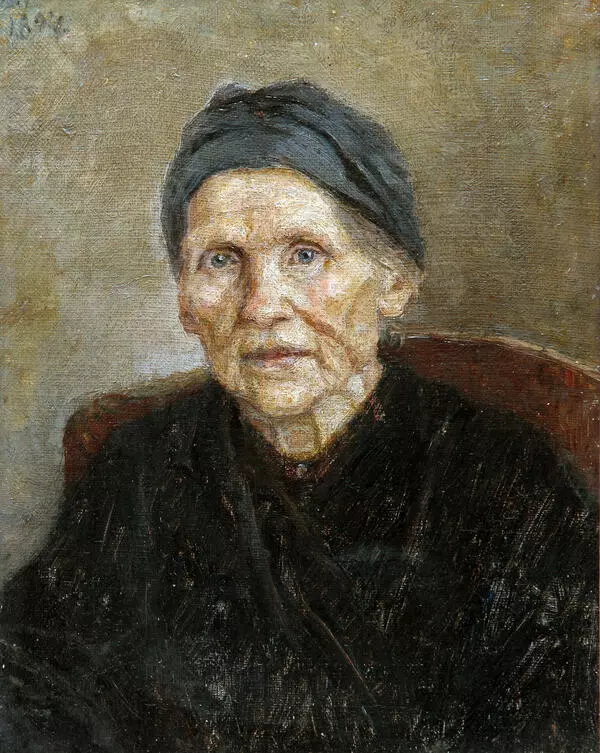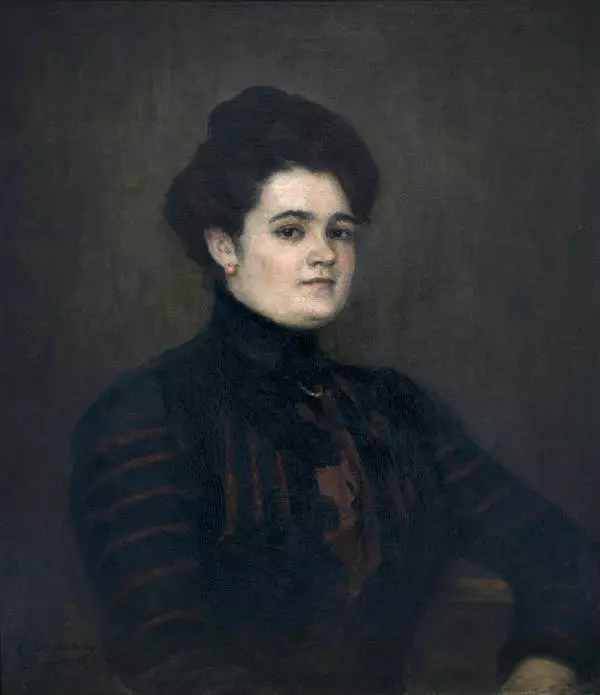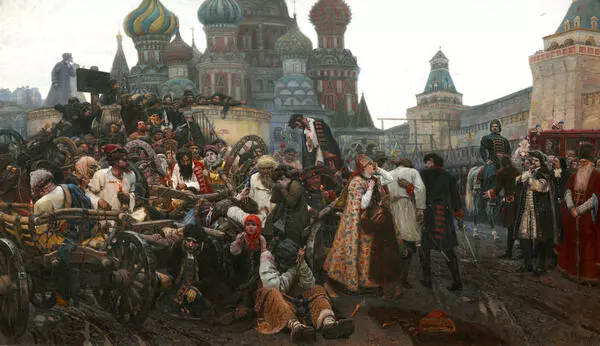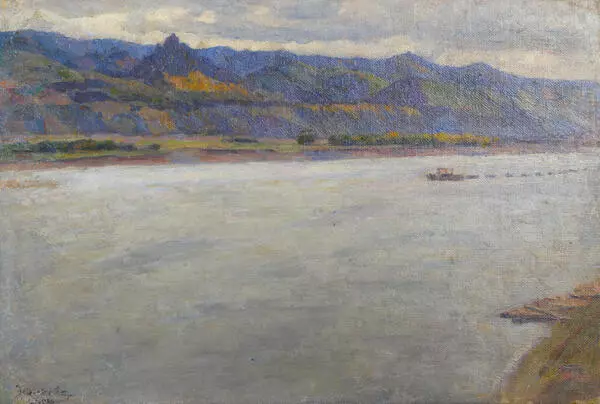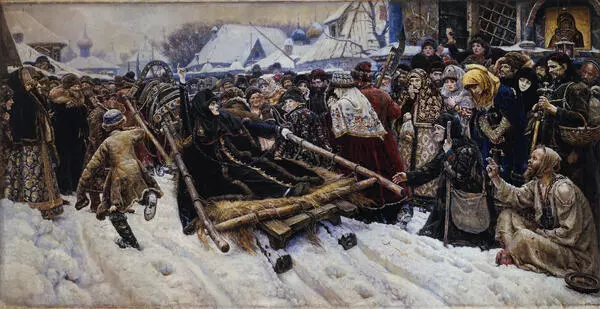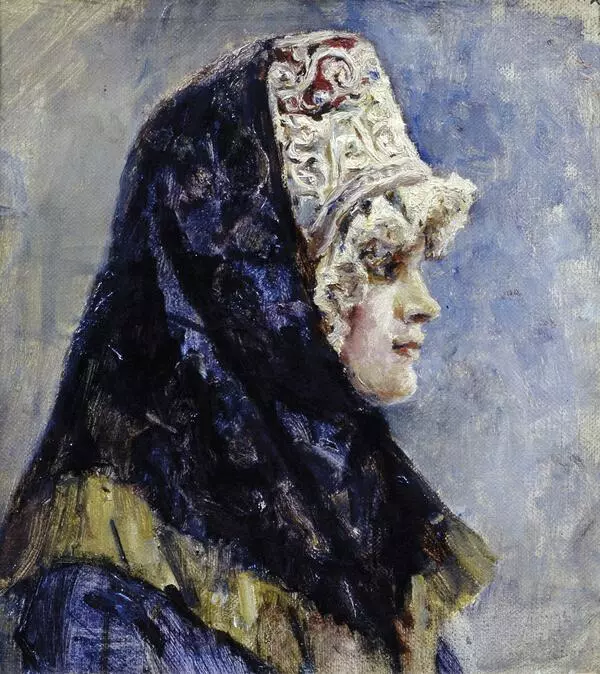The artist started on the painting Suvorov Crossing the Alps in 1895, already being the author of the large-size paintings Morning of the Streltsy Execution, Menshikov in Beryozovo, Boyarynya Morozova, Yermak’s Conquest of Siberia.
It took the artist four years to finish the painting. Surikov went to Switzerland in 1898 to draw sketches. His aim was to complete the painting by the anniversary of Suvorov’s crossing the Alps, which was to be commemorated in 1899. The actual crossing of the Alps from Italy to Switzerland by the Russian troops commanded by the Field-Marshal General Suvorov, took place during the second anti-Gallic coalition war. Emperor Pavel I awarded Generalissimo Title to Suvorov for this campaign; Grand Prince Konstantin Pavlovich, who also participated in the campaign, was granted the Title of Tsesarevich (Crown Prince). The scene portrayed in the painting, apparently refers to the end of the Alp campaign, crossing the Panixerpass, when Suvorov’s army was already descending from the mountains.
Surikov admitted that he made a decision to refer to this theme, after he had met a person in Krasnoyarsk, who looked very similar to Suvorov. However, his contemporaries put forward another version: Suvorov’s prototype was Grigorii Smirnov, a singing teacher at Krasnoyarsk boys’ gymnasia (high school). Besides the physical resemblance to Suvorov, he also possessed a white horse, similar to the one, portrayed in the painting, mounted by Suvorov.
However, the artist, personally, recalled afterwards: « I have drawn Suvorov from a Соssack officer. He is still alive and is in his late eighties. Nevertheless, the main thing about my painting is motion. The selfless courage: enthralled to the word of their Chieftain, the soldiers are advancing. Leo Tolstoy was utterly opposed to that idea “.
Surikov himself crossed the Gothhardpass on foot, to see the track of Suvorov”s army with his own eyes. Nevertheless, the artist ignored certain historical details. Vasilii Vereshagin, a battle painter and an expert in warfare, reprimanded Surikov for his inaccuracy. For instance, the soldiers could not have gone down the mountain with bare bayonets, while the horse would not have approached the edge of the abyss.
It took the artist four years to finish the painting. Surikov went to Switzerland in 1898 to draw sketches. His aim was to complete the painting by the anniversary of Suvorov’s crossing the Alps, which was to be commemorated in 1899. The actual crossing of the Alps from Italy to Switzerland by the Russian troops commanded by the Field-Marshal General Suvorov, took place during the second anti-Gallic coalition war. Emperor Pavel I awarded Generalissimo Title to Suvorov for this campaign; Grand Prince Konstantin Pavlovich, who also participated in the campaign, was granted the Title of Tsesarevich (Crown Prince). The scene portrayed in the painting, apparently refers to the end of the Alp campaign, crossing the Panixerpass, when Suvorov’s army was already descending from the mountains.
Surikov admitted that he made a decision to refer to this theme, after he had met a person in Krasnoyarsk, who looked very similar to Suvorov. However, his contemporaries put forward another version: Suvorov’s prototype was Grigorii Smirnov, a singing teacher at Krasnoyarsk boys’ gymnasia (high school). Besides the physical resemblance to Suvorov, he also possessed a white horse, similar to the one, portrayed in the painting, mounted by Suvorov.
However, the artist, personally, recalled afterwards: « I have drawn Suvorov from a Соssack officer. He is still alive and is in his late eighties. Nevertheless, the main thing about my painting is motion. The selfless courage: enthralled to the word of their Chieftain, the soldiers are advancing. Leo Tolstoy was utterly opposed to that idea “.
Surikov himself crossed the Gothhardpass on foot, to see the track of Suvorov”s army with his own eyes. Nevertheless, the artist ignored certain historical details. Vasilii Vereshagin, a battle painter and an expert in warfare, reprimanded Surikov for his inaccuracy. For instance, the soldiers could not have gone down the mountain with bare bayonets, while the horse would not have approached the edge of the abyss.
Surikov”s painting Suvorov Crossing the Alps was exhibited in St. Petersburg and Moscow, and later was acquired by Emperor Nikolay II. The original painting is currently exhibited in the State Russian Museum in St. Petersburg. A sketch of one of the soldiers is displayed at the exhibition of the Kaluga Museum of Fine Arts.
